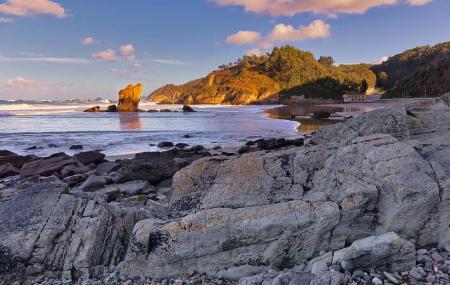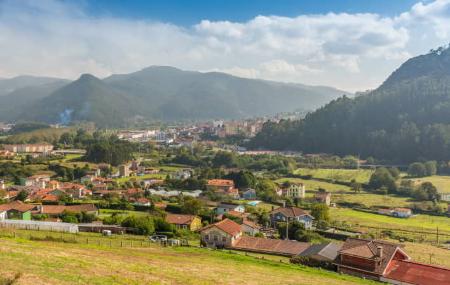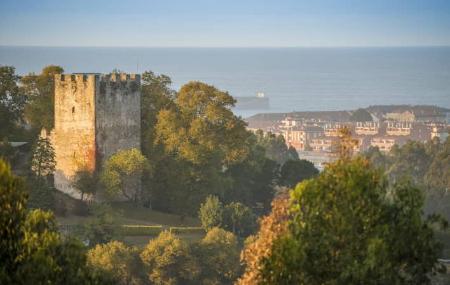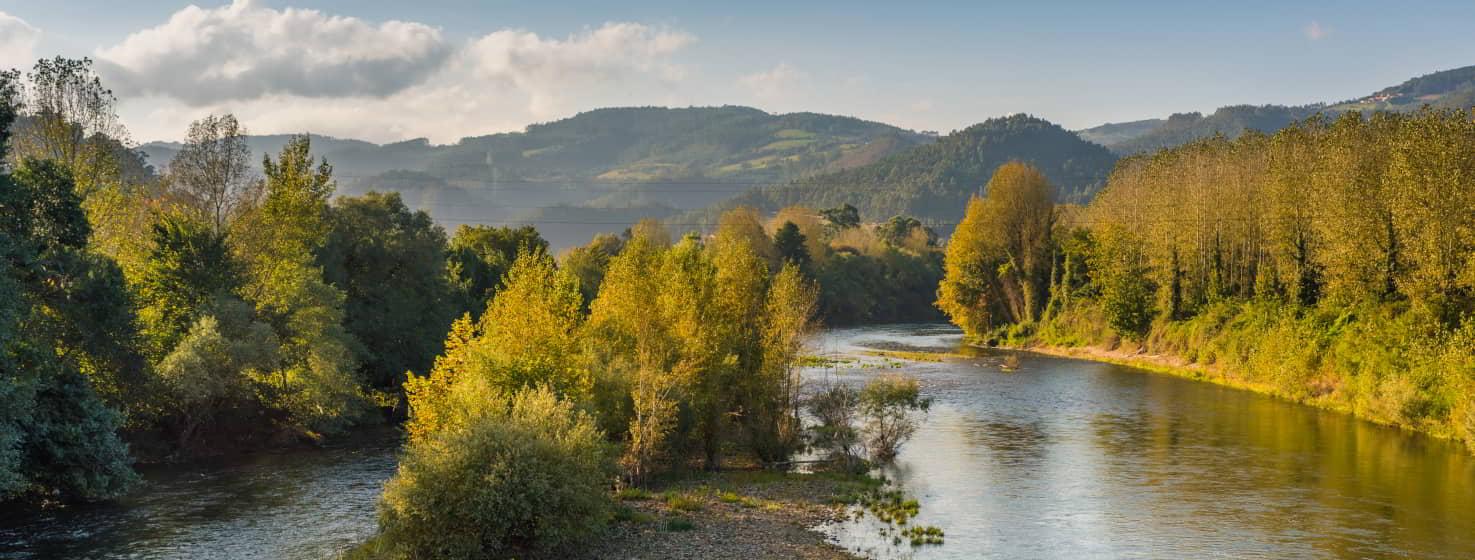
Lower Nalon

- Title Boroughs it comprises
Bajo Nalón Region
On the central coast of Asturias, where the river Nalón flows into the Cantabrian Sea, a region brimming with charm is born. A landscape that is at once undulating and rugged, with paths that skirt cliffs and open up to breathtaking views. The beaches also conserve their untamed character, and the pre-Romanesque architecture survives among fertile meadows and salmon reserves. The old loading bays of the docks, witnesses of the coal mining past, nowadays give way to an estuary open to nautical leisure. In its waters, always generous, the elver returns every year with the purity of the natural cycles intact.
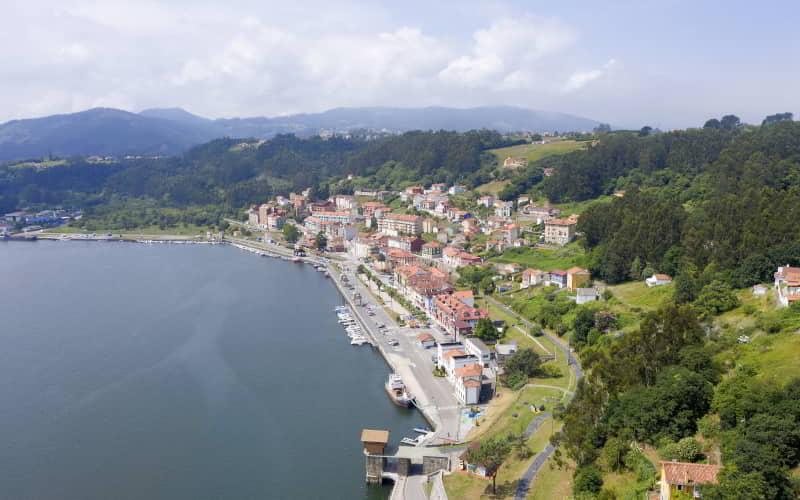
History of the Bajo Nalón
The natural limits of the Bajo Nalón, between the sea and the river, not only defined its geography, but also made it the scene of an intense and decisive history. The promontory of Castillo de San Martín, in Soto del Barco, condenses more than two thousand years: it was a fortified settlement, then a Roman enclave, a Christian necropolis and, if anything was missing, a medieval fortress. This continuity can also be seen in Pravia, where archaeologists locate the Roman city of Flavionavia, back in the 1st century. The council experienced its most glorious period when King Silo brought the court of the Kingdom of Asturias here in 774, leaving the mountains of Cangas de Onís. He reigned briefly (774-783), as did his successors, Mauregato (783-789) and Bermudo I (789-792); barely 18 years of court in Pravia, but enough for the Lower Nalón to become the nerve centre of Asturian history. Presumably, the first palace complex of the Asturian monarchy was built here, although the architectural evidence that has survived to the present day is mainly limited to the church of Santianes: modest in size, immense in historical value, and considered the oldest pre-Romanesque temple in Asturias.
In the medieval and modern centuries, the Lower Nalon retained its weight in the shadow of nobles and clerics. There are eloquent traces: in Muros de Nalón, the Palace of Valdecarzana and the Plaza del Marqués (16th century), where the old market founded by Carlos I is still held; in Pravia, its solemn Collegiate Church and the stately Palace of Moutas, the 18th century pride of the town.
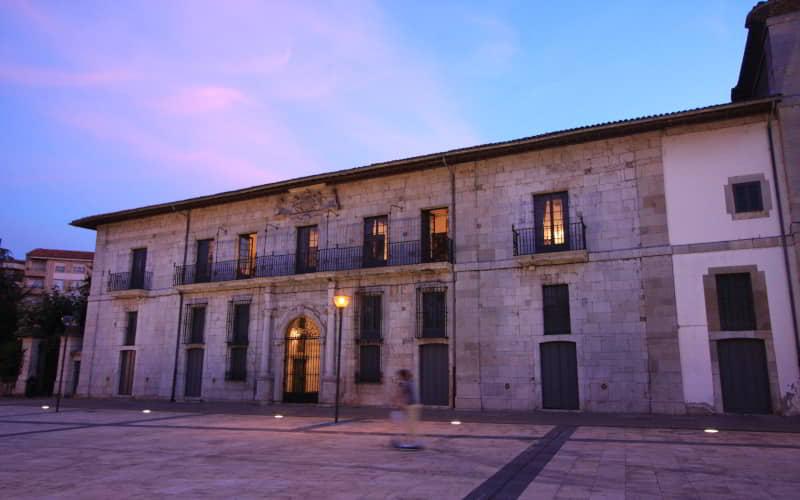
In the 20th century, San Esteban (Muros del Nalón) became the great coal port of Spain. The whistle of the Basque-Asturian Railway, which arrived in 1908, chained it to the industrial heart of Asturias. Colossal cranes (Babcock & Wilcox), loading bays and sturdy norays still watch over the quay where the coal, coming from Turón and Aller, left for the Basque Country and the Mediterranean. Today, the Coal Trail follows this legacy step by step, until it reaches the hoppers of El Carbayo, enormous deposits that once stored thousands of tonnes of ore.
On the other side of the estuary, L'Arena (Soto del Barco), lived times of splendour with its canning industry, which housed up to thirteen factories. Today, when the hustle and bustle of the factories has ceased, an almost ancestral tradition survives: elver fishing. Only a few authorised sailors, sieve in hand and lantern on their belts, continue to go out on dark nights, guided by the waning moon. The fruit of this patient activity reaches the famous L'Arena fish market, where the largest quantity of elver in the whole of Asturias is auctioned.
At the beginning of the 20th century, many sons of the Bajo Nalón returned from America with fortune in their pockets and a new world in their heads. They transformed their villages with colourful mansions, overseas gardens, schools, streets and fountains. Somao, in Pravia, is the emblem of that Indiano dream. Distinguished as an Exemplary Town of Asturias in 2020, it is home to a simple itinerary that takes us to beautiful buildings of the time, such as El Noceo or the Casa Amarilla.
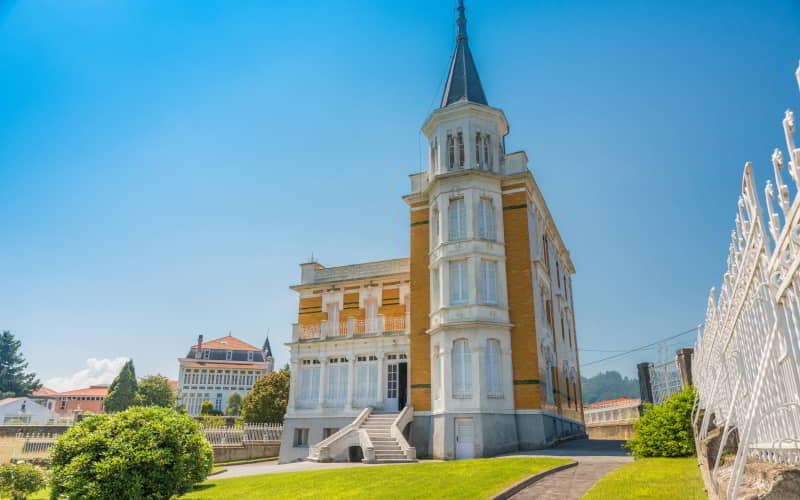
Nature and landscapes of the Bajo Nalón
From above, the mouth of the Nalón - the longest and largest river in Asturias - traces a line of water that unites and separates at the same time the lands of Pravia, Soto del Barco and Muros de Nalón. In this small territory of little more than 150 km², protected river areas and landscapes open to the sea coexist. One of the most beautiful stretches of the Northern Way of St. James, a World Heritage Site, runs through here. The Jacobean route enters the region through Soto del Barco, passes through Muros and continues towards Cudillero. In former times, pilgrims crossed the wide Nalón by boat from El Castillo, with more faith than security. Today the route can be done in its entirety, except for this section, as the boat has disappeared. From the wharf, return to the L'Arena road, turn towards Soto del Barco and cross the Nalón by the current N-632 bridge.
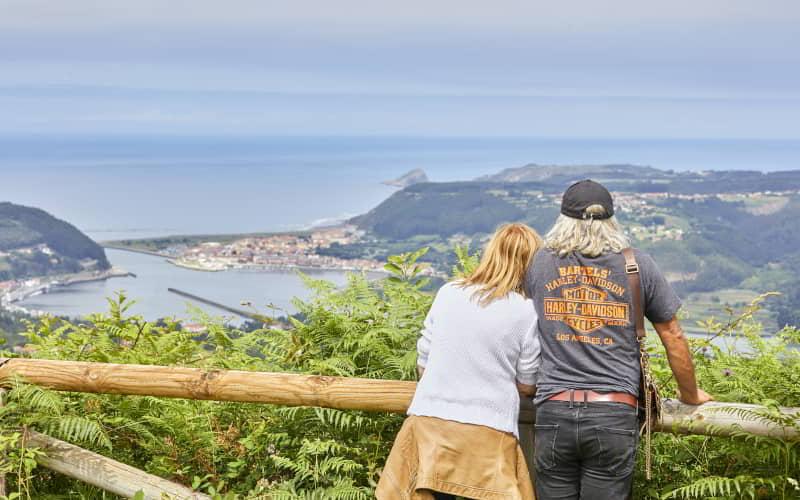
From the Monteagudo viewpoint, you can see at a glance the meanders and the Nalón estuary, the villages that surround it and, in the background, the Bay of Biscay. It is a place that invites you to imagine paths; your gaze traces possible itineraries in a pleasant landscape, ideal for getting lost on routes on foot or by bike. This is the case of the Narcea route, which starts in Pravia and runs through meadows, landscapes and riverside forests. Along the way, you will come across legendary salmon fishing grounds, such as Puente Quinzanas or La Figal. We will also witness the confluence of the Narcea and the Nalón, a very suitable area for environmental education and canoeist training.
The simple Pravia - Santianes route also takes us to the banks of the Nalón, between alders, riverside forests and large areas of crops. These fertile river plains, once occupied by small livestock farms, have undergone a real agricultural revolution in recent decades. The exceptional quality of its soils favours high-value crops such as kiwi and faba beans. The route to Santianes crosses the La Isla suspension bridge, with beautiful views of the river, and ends at the beautiful pre-Romanesque church of San Juan de Santianes.
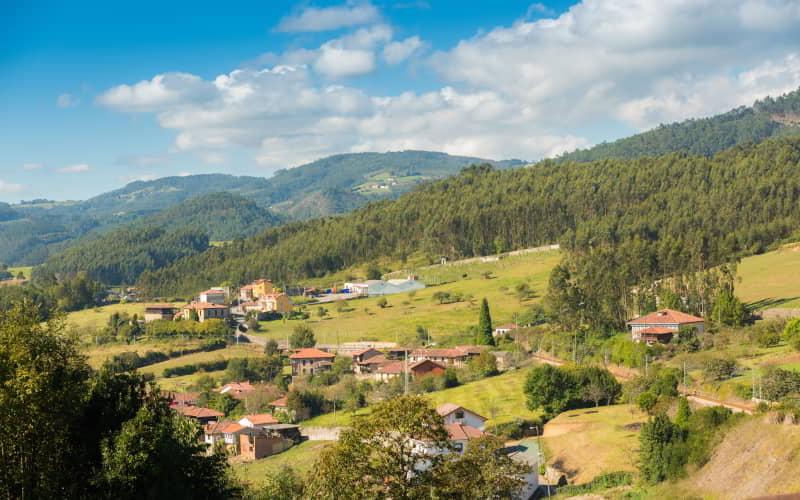
Beaches of the Bajo Nalón
The coastline of the Bajo Nalón unfolds a changing mosaic of beaches and bathing spots, with the unspoilt beauty of the surroundings and a diversity that ranges from open sandy beaches to hidden coves. Los Quebrantos beach and Playón de Bayas make up the largest beach in Asturias, with an open horizon that joins the councils of Soto del Barco and Castrillón, perfect for bathing and surfing. In addition, in a large area of the Bayas beach dogs are allowed all year round, with no time restrictions, being one of the few beaches in Asturias with this permanent authorisation.
The council of Muros del Nalón has more intimate and sheltered coves, such as Xilo (Veneiro), Las Llanas or El Garruncho. And in San Esteban, the saltwater pools complete the summer offer with a large number of visitors in the warm months. Aguilar beach, also in Muros, is one of the most photographed beaches in Asturias thanks to its rocky tombolo rising up in the middle of the tides. It is also the most visited beach in the council, with good access by car, car park, beach bars and promenade. From here starts (or ends) the Ruta de los Miradores, an easy and well-signposted walk along the cliffs between San Esteban and Aguilar. Classified as a Blue Trail, it is 12 kilometres round trip along a path that offers a complete sensory experience: fine sandy beaches, secret coves, rest areas, wooded areas, natural terraces that invite you to stop to watch seabirds and breathe the slow pulse of this coast, the more beautiful the steeper it is. The path can be covered by bicycle, as can many other cycle touring routes in the Bajo Nalón.
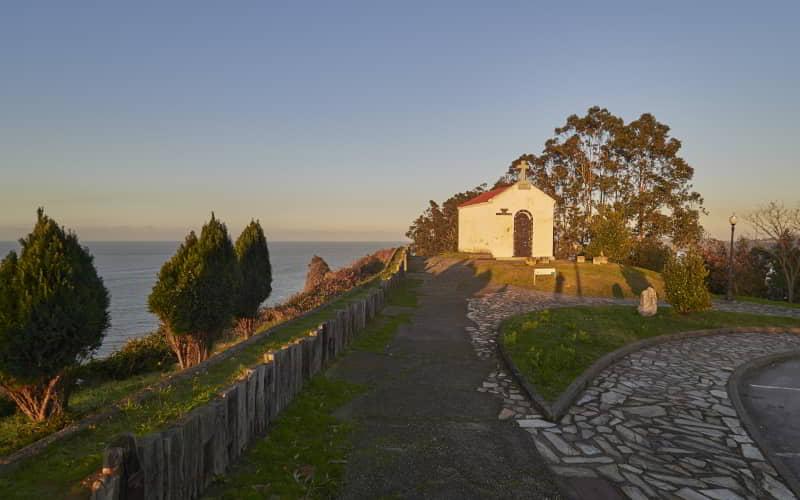
Tips for a visit to the Bajo Nalón
The region has excellent access by road and train. It is just 20 kilometres from Avilés, and less than 50 from Gijón/Xixón and Oviedo/Uviéu via the A-8 motorway. The N-432 runs through it internally. Asturias airport is also nearby, in the neighbouring municipality of Castrillón.
The Nalón estuary and its coastal strip is an ideal environment to enjoy sailing. The L'Arena and San Esteban yacht clubs provide tourist outings to the sea or trips along the estuary that pass historic sites such as the Castle of San Martín or the Palace of La Magdalena.
Surfing and paddle surfing are guaranteed in both Los Quebrantos and Aguilar, with schools offering courses for all levels and organising camps and stays.
On the mainland, the historic centre of Pravia is well worth a visit, as it preserves the noble and peaceful atmosphere of things well established over the centuries, especially in the area around the Palace of Moutas, while the streets of the town of Muros also have the soul of another era, with mansions, old squares and palatial surroundings such as Valdecarzana or the Marqués de Muros.
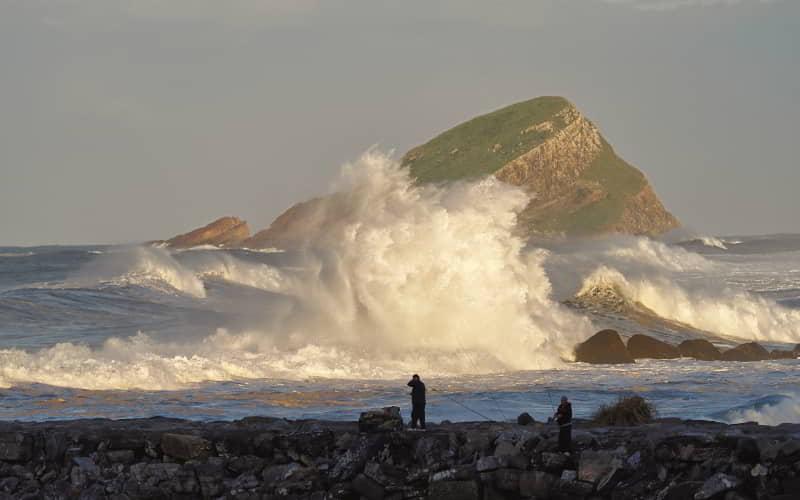
The old coal port of San Esteban, steeped in mining and railway history as we have seen, was a place of inspiration for the Nicaraguan poet Ruben Darío. Today, with even more poetic charm, it continues to be an essential stop for those who travel through the region with sensitivity and cultural curiosity.
For its part, the port of L'Arena is one of those places that invite silence and contemplation. With its still boats and the swaying of the tides, it looks like something out of a genre painting.
The gastronomy of the region is a feast for the senses, an assortment designed for kings and poets of good food. Eating well is a must. In towns, villages, ports and beaches there are plenty of restaurants and cider bars where Asturian cuisine and good cider are enjoyed with intensity. Every first weekend in March, L'Arena celebrates its Angula Gastronomic Festival, (a Festival of Tourist Interest in the Principality), where tribute is paid to this culinary prodigy. In the fertile lands of Pravia some of the best "fabes" of Asturias are harvested, as well as kiwis, blueberries and excellent horticultural products that every August are exhibited for sale in its popular Festival de la Huerta (Vegetable Garden Festival). The rivers Nalón and Narcea provide trout and salmon, and from the Cantabrian Sea come the sea bream, sea bass, sea bream and goose barnacles, sea urchins and andaric. There is no shortage of traditional sweets, such as the "bollinas", made in the town of Riberas. A dessert made with thin pastry and filled with walnuts, sugar and aniseed, different from "les casadielles" and faithful to the recipe of the grandmothers. Among the cheeses, Afuega'l Pitu (with PDO) and the varieties of Rey Silo stand out.
This is a land where life is good, with that serene rhythm that urbanites call "disconnection". But here you disconnect by celebrating the Xiringüelu: a pagan and boisterous folixa where the link with the land is renewed to the rhythm of music and cider. Every first Sunday in August, in Pravia's prau Salcéu, the peñas of friends decorate their stands and once again fulfil this Asturian ritual.
Over the years, the Bajo Nalón region has attracted writers, painters and travellers sensitive to the evocative power of its landscape. Poets such as Ángel González or the aforementioned Rubén Darío found a different rhythm in this land. The artist Joaquín Sorolla, always attentive to the Atlantic light, also spent several summers in the region, producing more than 50 works inspired by the sea, fishing, the countryside and Asturian customs. And the fact is that everything in this land seems to form part of the same canvas, painted calmly to capture its changing light and that simple and essential way of enjoying life.
Images
Map
What to see
- San Esteban and Lighthouse.
- Route of the Viewpoints and the Chapel of the Holy Spirit.
- Aguilar Beach.
- L' Arena and Los Quebrantos Beach.
- El Castillu village and jetty.
- Villa de Pravia and the village of Somao (Indian architecture).

